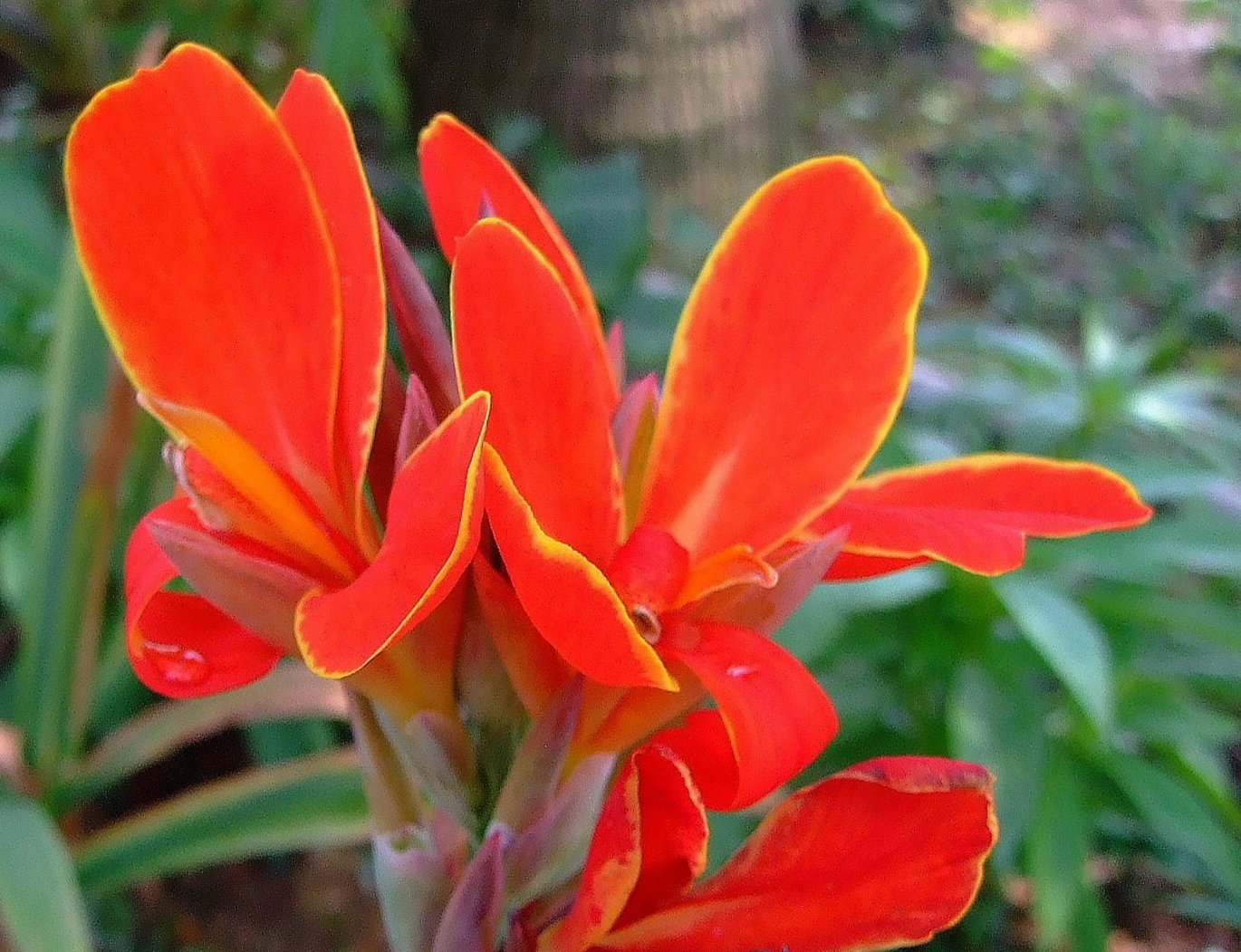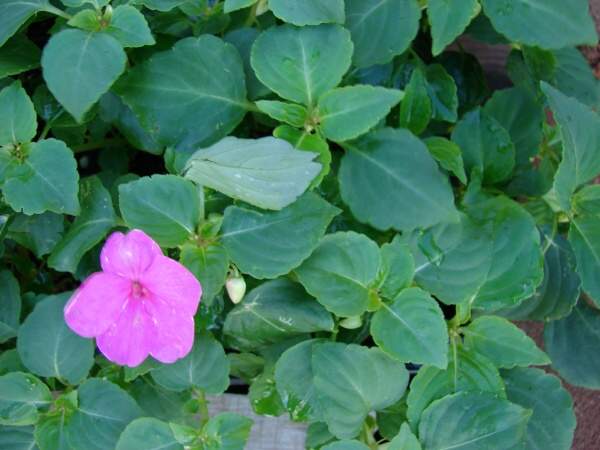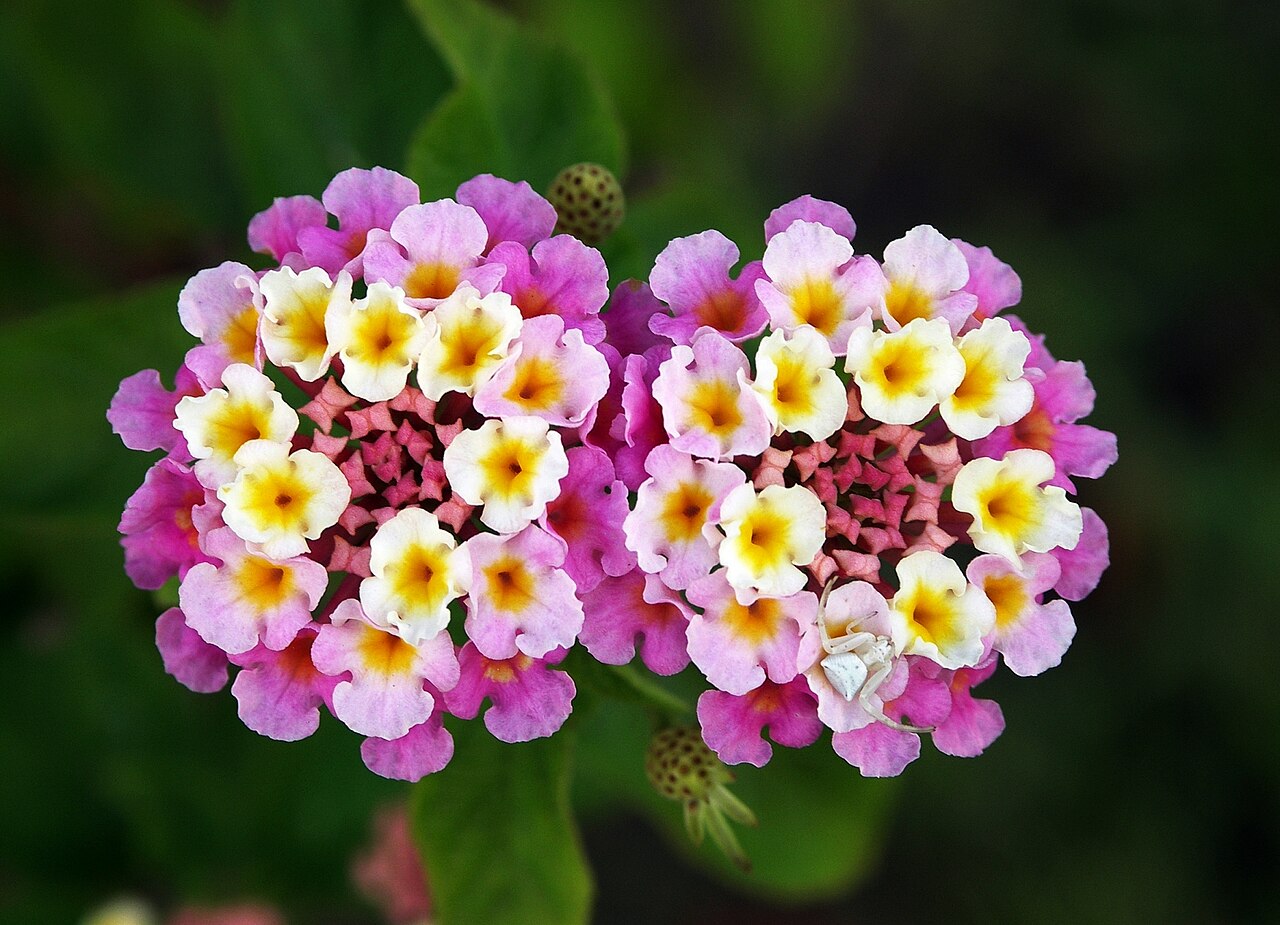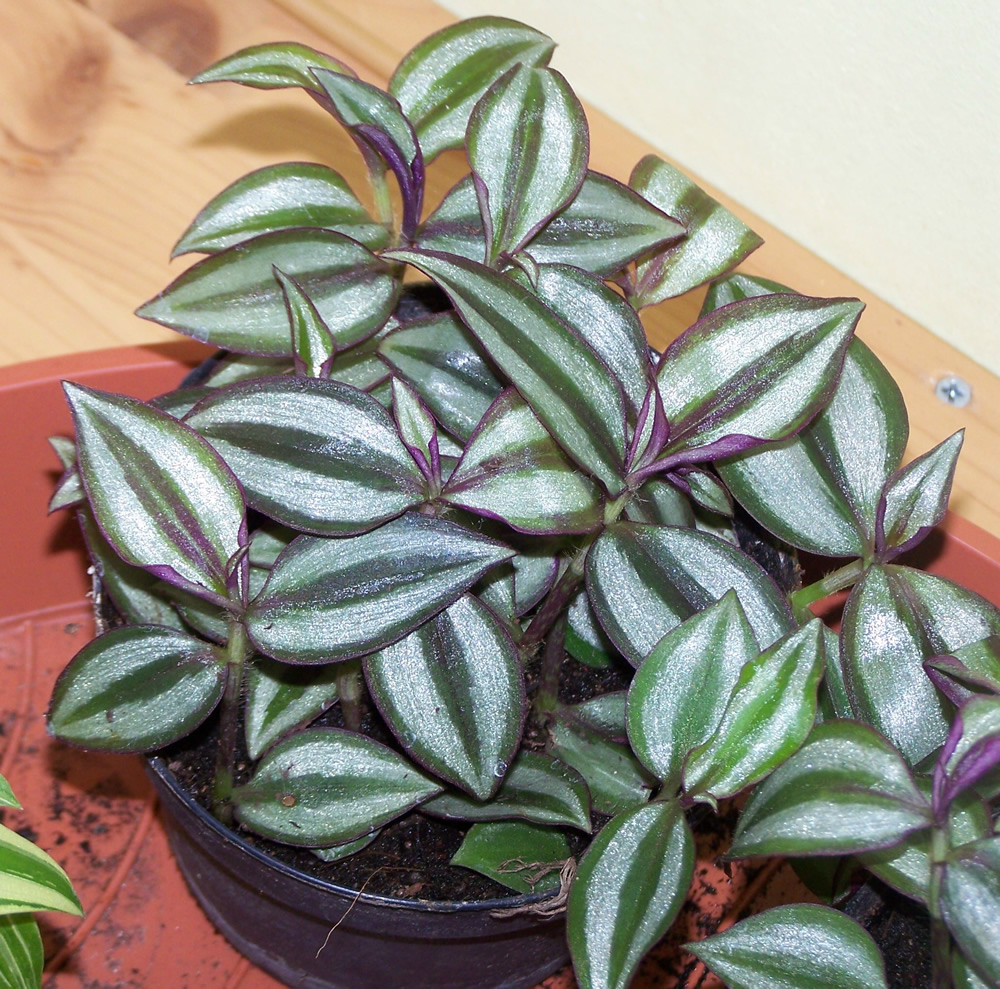Botanical
Name: Begonia x tuberhybrida
Common Name: tuberous begonia
Family: Begoniaceae
Distribution/Origin: South America
Leaf: green to bronze colored, ovate shaped with incised margins, alternate, fuzzy texture
Bud:
Flower: cyme arrangement, red, yellow or white colored, double or single petals
Fruit/Seed:
Stem/Bark: thick and fleshy
Size: 6”-12”, speading 9”-12”
Habit: upright
Form: bushy, compact
Soil Conditions: rich, well drained soil
Moisture: moderate watering, doesn't like to be too wet or too dry
Sun: partial to full shade
Exposure:
Landscape Use: bedding, container gardening
Notes: in the past, begonias were used to polish sword blades


Leaf: swollen node leaf base, ovate shape with serrate margins, glossy surface
Bud:
Flower: cyme, cluster varying colors of pink, red, white
Fruit/Seed:
Stem/Bark: fleshy stems that can retain water in times of drought
Size: 6”-12” height, speading
Habit: rounded
Form: glossy leaves, clump forming
Soil Conditions: rich, well drained soil
Moisture: prefer evenly moist soil, will tolerate some drought
Sun: shade to partial shade
Exposure:
Landscape Use: bedding plants, container gardening
Notes: the name Begonia honors Michel Begon, a former governor and amateur botanist
Common Name: tuberous begonia
Family: Begoniaceae
Distribution/Origin: South America
Leaf: green to bronze colored, ovate shaped with incised margins, alternate, fuzzy texture
Bud:
Flower: cyme arrangement, red, yellow or white colored, double or single petals
Fruit/Seed:
Stem/Bark: thick and fleshy
Size: 6”-12”, speading 9”-12”
Habit: upright
Form: bushy, compact
Soil Conditions: rich, well drained soil
Moisture: moderate watering, doesn't like to be too wet or too dry
Sun: partial to full shade
Exposure:
Landscape Use: bedding, container gardening
Notes: in the past, begonias were used to polish sword blades

Botanical Name: Begonia
semperflorens hybrids
Common Name: wax begonia, fibrous begonia
Family: Begoniaceae
Distribution/Origin: South AmericaFamily: Begoniaceae
Leaf: swollen node leaf base, ovate shape with serrate margins, glossy surface
Bud:
Flower: cyme, cluster varying colors of pink, red, white
Fruit/Seed:
Stem/Bark: fleshy stems that can retain water in times of drought
Size: 6”-12” height, speading
Habit: rounded
Form: glossy leaves, clump forming
Soil Conditions: rich, well drained soil
Moisture: prefer evenly moist soil, will tolerate some drought
Sun: shade to partial shade
Exposure:
Landscape Use: bedding plants, container gardening
Notes: the name Begonia honors Michel Begon, a former governor and amateur botanist


Botanical
Name: Canna x generalis
Common Name: canna lily
Family: Cannaceae
Distribution/Origin: South America, Central America, Mexico, South Asia (tropical plant)
Leaf: leathery, pinnate venation, elliptic shape, undulate margins
Bud: ruffled spikes tapering to refined buds
Flower: asymmetrical flower shape, raceme, showy colors of red, yellow, pink, orange
Fruit/Seed: inconspicuous
Stem/Bark: central stock from rhizome
Size: 4’-6’ in height, 15”-18” spacing
Habit: pendulous, upright
Form: vigorous clumping
Soil Conditions: well drained
Moisture: high moisture needs, suitable for bogs or water gardens
Sun: full sun to partial shade
Exposure:
Landscape Use: accenting arrangements, center piece
Notes: the name Canna originates from Latin for ‘cane’ or ‘reed’
Common Name: canna lily
Family: Cannaceae
Distribution/Origin: South America, Central America, Mexico, South Asia (tropical plant)
Leaf: leathery, pinnate venation, elliptic shape, undulate margins
Bud: ruffled spikes tapering to refined buds
Flower: asymmetrical flower shape, raceme, showy colors of red, yellow, pink, orange
Fruit/Seed: inconspicuous
Stem/Bark: central stock from rhizome
Size: 4’-6’ in height, 15”-18” spacing
Habit: pendulous, upright
Form: vigorous clumping
Soil Conditions: well drained
Moisture: high moisture needs, suitable for bogs or water gardens
Sun: full sun to partial shade
Exposure:
Landscape Use: accenting arrangements, center piece
Notes: the name Canna originates from Latin for ‘cane’ or ‘reed’


Botanical
Name: Cleome hassleriana
Common Name: spider plant
Family: Capparidaceae
Distribution/Origin: South America
Leaf: pinnately compound, digitate, 5-7 leaflets
Bud:
Flower: floriferous, raceme, pink, white and purple in color, sweetly fragrant
Fruit/Seed: capsule 15cm long,‘spidery’ seed pods
Stem/Bark:
Size: 3’-6’ height, 1’-2’ spread
Habit: upright
Form: vase
Soil Conditions: well drained
Moisture: dry to medium
Sun: full sun
Exposure:
Landscape Use: beds, borders, background plantings mixed with shrubs
Notes: in its native tropical habitat, bats are the primary pollinators
Common Name: spider plant
Family: Capparidaceae
Distribution/Origin: South America
Leaf: pinnately compound, digitate, 5-7 leaflets
Bud:
Flower: floriferous, raceme, pink, white and purple in color, sweetly fragrant
Fruit/Seed: capsule 15cm long,‘spidery’ seed pods
Stem/Bark:
Size: 3’-6’ height, 1’-2’ spread
Habit: upright
Form: vase
Soil Conditions: well drained
Moisture: dry to medium
Sun: full sun
Exposure:
Landscape Use: beds, borders, background plantings mixed with shrubs
Notes: in its native tropical habitat, bats are the primary pollinators
Botanical
Name: Echeveria elegans
Common Name: Mexican snowball
Family: Crassulaceae
Distribution/Origin: South America
Leaf: rosettes, fleshy leaves, evergreen
Bud:
Flower: urn shaped flowers
Fruit/Seed:
Stem/Bark:
Size: 10cm tall,
Habit: spiky ends, smooth fleshy texture
Form: spreading, dense mound
Soil Conditions: sand, loam
Moisture: drought tolerant, well drained, prefers a deep watering
Sun: full sun
Exposure: sheltered
Landscape Use: bedding plant, container use, front bordering
Notes: commonly referred to as “hens and chicks”, these plants were used for roofing material due to their dense growing form, as well as the belief they could ward off lightning
Common Name: Mexican snowball
Family: Crassulaceae
Distribution/Origin: South America
Leaf: rosettes, fleshy leaves, evergreen
Bud:
Flower: urn shaped flowers
Fruit/Seed:
Stem/Bark:
Size: 10cm tall,
Habit: spiky ends, smooth fleshy texture
Form: spreading, dense mound
Soil Conditions: sand, loam
Moisture: drought tolerant, well drained, prefers a deep watering
Sun: full sun
Exposure: sheltered
Landscape Use: bedding plant, container use, front bordering
Notes: commonly referred to as “hens and chicks”, these plants were used for roofing material due to their dense growing form, as well as the belief they could ward off lightning
Botanical
Name: Impatiens hawkeri
Common Name: New Guenia impatiens
Family: Balsaminaceae
Distribution/Origin: Australia, New Zealand
Leaf: ovate, acute, hairy crenulate margins, whorled arrangement
Bud:
Flower: spurred, asymmetrical flowers, five petals, lower petals fused, wide color range
Fruit/Seed:
Stem/Bark: brittle, succulent stems
Size: 10”-14” height, 6”-8” spacing
Habit: dense, upright
Form: oval, round
Soil Conditions: loamy
Moisture: consistently moist soil
Sun: partial shade
Exposure:
Landscape Use: container, bedding
Notes: Often called “Busy Lizzie” to describe the way the seeds shoot out of the pods when touched
Common Name: New Guenia impatiens
Family: Balsaminaceae
Distribution/Origin: Australia, New Zealand
Leaf: ovate, acute, hairy crenulate margins, whorled arrangement
Bud:
Flower: spurred, asymmetrical flowers, five petals, lower petals fused, wide color range
Fruit/Seed:
Stem/Bark: brittle, succulent stems
Size: 10”-14” height, 6”-8” spacing
Habit: dense, upright
Form: oval, round
Soil Conditions: loamy
Moisture: consistently moist soil
Sun: partial shade
Exposure:
Landscape Use: container, bedding
Notes: Often called “Busy Lizzie” to describe the way the seeds shoot out of the pods when touched
Botanical
Name: Impatiens walleriana
Common Name: impatiens
Family: Balsaminaceae
Distribution/Origin: Australia, New Zealand, South America, Africa
Leaf: alternate, spiraled formation, ovate, acute, dentate margin
Bud:
Flower: floriferous, raceme, 5 petals, pink, white, red, violet in colors
Fruit/Seed: green fruit, capsule
Stem/Bark:
Size: 6”-12” tall, 6”-9” inches spreading
Habit: mounding, dense, spreading, stiffly upright, fast growing
Form: soft, flexible
Soil Conditions:
Moisture: well drained
Sun: sun to partial shade
Exposure:
Landscape Use: bedding plant, container use, hanging basket
Notes: the name “impatiens” originated from this plants “impatience at holding its seeds”
Common Name: impatiens
Family: Balsaminaceae
Distribution/Origin: Australia, New Zealand, South America, Africa
Leaf: alternate, spiraled formation, ovate, acute, dentate margin
Bud:
Flower: floriferous, raceme, 5 petals, pink, white, red, violet in colors
Fruit/Seed: green fruit, capsule
Stem/Bark:
Size: 6”-12” tall, 6”-9” inches spreading
Habit: mounding, dense, spreading, stiffly upright, fast growing
Form: soft, flexible
Soil Conditions:
Moisture: well drained
Sun: sun to partial shade
Exposure:
Landscape Use: bedding plant, container use, hanging basket
Notes: the name “impatiens” originated from this plants “impatience at holding its seeds”


Botanical Name: Ipomea
batatas
Common Name: sweet potato vine
Family: Convolvuaceae
Distribution/Origin: Indonesia, Africa, Central America, South America
Leaf: lobed, alternate, pinnately lobed,
Bud:
Flower:
Fruit/Seed:
Stem/Bark:
Size: 36”-48” spreading, 6”-8” height
Habit: trailing, irregular, open, pendulous
Form: glabrous, soft, flexible, weeping
Soil Conditions:
Moisture: well drained
Sun: part to full sun
Exposure:
Landscape Use: ground cover, hanging baskets, mixed containers
Notes: sweet potato, often referred to as “yams” is derived from the African word “nyami” which means “to eat”
Common Name: sweet potato vine
Family: Convolvuaceae
Distribution/Origin: Indonesia, Africa, Central America, South America
Leaf: lobed, alternate, pinnately lobed,
Bud:
Flower:
Fruit/Seed:
Stem/Bark:
Size: 36”-48” spreading, 6”-8” height
Habit: trailing, irregular, open, pendulous
Form: glabrous, soft, flexible, weeping
Soil Conditions:
Moisture: well drained
Sun: part to full sun
Exposure:
Landscape Use: ground cover, hanging baskets, mixed containers
Notes: sweet potato, often referred to as “yams” is derived from the African word “nyami” which means “to eat”

Botanical Name: Iresine
herbstii
Common Name: bloodleaf
Family: Amaranthaceae
Distribution/Origin: South America
Leaf: burgundy, bronze green foliage, opposite arrangement, succulent venation, ovate, attenuate
Bud:
Flower: rarely blooms in cultivation
Fruit/Seed:
Stem/Bark: fleshy stems
Size: 12”-18” high, 9”-12” wide
Habit: upright
Form: oval, vertical
Soil Conditions: rich soil that drains freely
Moisture: evenly moist, enjoys high heat and humidity
Sun: partial shade to sun
Exposure:
Landscape Use: bedding plants, borders
Notes: in the Peruvian Andes it was used by traditional healers to expel evil spirits from the body
Common Name: bloodleaf
Family: Amaranthaceae
Distribution/Origin: South America
Leaf: burgundy, bronze green foliage, opposite arrangement, succulent venation, ovate, attenuate
Bud:
Flower: rarely blooms in cultivation
Fruit/Seed:
Stem/Bark: fleshy stems
Size: 12”-18” high, 9”-12” wide
Habit: upright
Form: oval, vertical
Soil Conditions: rich soil that drains freely
Moisture: evenly moist, enjoys high heat and humidity
Sun: partial shade to sun
Exposure:
Landscape Use: bedding plants, borders
Notes: in the Peruvian Andes it was used by traditional healers to expel evil spirits from the body
Botanical Name: Lantana
camara
Common Name: lantana
Family: Verbenaceae
Distribution/Origin: Central America, South America
Leaf: opposite arrangement, heavily veined, dentate margin, cuneate base, toothed margin
Bud:
Flower: umbel, 5 petals, varying colors, heavily fragrant “spicy”
Fruit/Seed:
Stem/Bark:
Size: 36”-48” high, 36”-48” tall
Habit: grows at forest edge, erect arching shrub, forms dense thickets
Form: rough to touch, armed with short prickles, dense flower clusters
Soil Conditions: prefer slightly acidic soil
Moisture: well drained
Sun: full sun
Exposure:
Landscape Use: garden bed or large containers
Notes: stocks have been used in construction of furniture such as chairs and tables.
Common Name: lantana
Family: Verbenaceae
Distribution/Origin: Central America, South America
Leaf: opposite arrangement, heavily veined, dentate margin, cuneate base, toothed margin
Bud:
Flower: umbel, 5 petals, varying colors, heavily fragrant “spicy”
Fruit/Seed:
Stem/Bark:
Size: 36”-48” high, 36”-48” tall
Habit: grows at forest edge, erect arching shrub, forms dense thickets
Form: rough to touch, armed with short prickles, dense flower clusters
Soil Conditions: prefer slightly acidic soil
Moisture: well drained
Sun: full sun
Exposure:
Landscape Use: garden bed or large containers
Notes: stocks have been used in construction of furniture such as chairs and tables.

Botanical Name: Nicotiana
x hybrida
Common Name: flowering tobacco
Family: Verbenaceae
Distribution/Origin: Americas, Australia, Africa
Leaf: green, spatulate, winged petioles
Bud:
Flower: white/pale yellow/pink flowers nocturnally fragrant, tubular, raceme, star shaped blooms
Fruit/Seed:
Stem/Bark:
Size: 5’ in height, 2’ spreading
Habit: upright, clumping
Form:
Soil Conditions: rich, well drained
Moisture: moderate
Sun: full sun, semi shade
Exposure:
Landscape Use: bedding plants, shrub/perennial borders, scent garden
Notes: named in honor of John Nicot, French Ambassador to Portugal, who sent it as medicine to the court of Catherine de’ Medici in 1559
Common Name: flowering tobacco
Family: Verbenaceae
Distribution/Origin: Americas, Australia, Africa
Leaf: green, spatulate, winged petioles
Bud:
Flower: white/pale yellow/pink flowers nocturnally fragrant, tubular, raceme, star shaped blooms
Fruit/Seed:
Stem/Bark:
Size: 5’ in height, 2’ spreading
Habit: upright, clumping
Form:
Soil Conditions: rich, well drained
Moisture: moderate
Sun: full sun, semi shade
Exposure:
Landscape Use: bedding plants, shrub/perennial borders, scent garden
Notes: named in honor of John Nicot, French Ambassador to Portugal, who sent it as medicine to the court of Catherine de’ Medici in 1559

Botanical Name: Petunia
x hybrida
Common Name: petunia
Family: Solanaceae
Distribution/Origin: Garden origin, South America
Leaf: ovoid and alternate, pale light green, pubescent surfaces, simple. Leaves often have a sticky “sap”, which protects it from pests and insects that can cause harm.
Bud:
Flower: solitary flowers, perfect, showy wide range of colors, sweetly scented, radially symmetrical, delicate petals that easily go limp
Fruit/Seed: Aborted in hybrids (absent)
Stem/Bark:
Size: 6” tall, 3’ spread
Habit: trailing, cascading
Form: matting growth habit, entangles upon itself and others, dense
Soil Conditions: well drained
Moisture: moist
Sun: Full sun
Exposure:
Landscape Use: borders, baskets,
Notes: the name Petunia is derived from “petun” which stands for tobacco in brazil. These two plants are genetically related and can be crossbred.
Common Name: petunia
Family: Solanaceae
Distribution/Origin: Garden origin, South America
Leaf: ovoid and alternate, pale light green, pubescent surfaces, simple. Leaves often have a sticky “sap”, which protects it from pests and insects that can cause harm.
Bud:
Flower: solitary flowers, perfect, showy wide range of colors, sweetly scented, radially symmetrical, delicate petals that easily go limp
Fruit/Seed: Aborted in hybrids (absent)
Stem/Bark:
Size: 6” tall, 3’ spread
Habit: trailing, cascading
Form: matting growth habit, entangles upon itself and others, dense
Soil Conditions: well drained
Moisture: moist
Sun: Full sun
Exposure:
Landscape Use: borders, baskets,
Notes: the name Petunia is derived from “petun” which stands for tobacco in brazil. These two plants are genetically related and can be crossbred.

Botanical Name: Plectranthus argentatus
Common Name: silver spurflower
Family: Lamiaceae
Distribution/Origin: Australia
Leaf: ovate with crenate margins, silvery fuzzy leaves
Bud:
Flower: terminal racemes bluish white in color
Fruit/Seed:
Stem/Bark: square stems (characteristic to lamiaceae family)
Size: 2-3’ tall, 3’ wide
Habit: upright, spreading, bushy
Form: woody based sub shrub
Soil Conditions: rich soils that are well drained
Moisture: allow to dry between waterings, can tolerate some drought
Sun: part shade
Exposure:
Landscape Use: bedding plant, borders and containers, used for attractive foliage
Notes: Specific epithet argentatus is Latin for silver, which refers to the foliage
Common Name: silver spurflower
Family: Lamiaceae
Distribution/Origin: Australia
Leaf: ovate with crenate margins, silvery fuzzy leaves
Bud:
Flower: terminal racemes bluish white in color
Fruit/Seed:
Stem/Bark: square stems (characteristic to lamiaceae family)
Size: 2-3’ tall, 3’ wide
Habit: upright, spreading, bushy
Form: woody based sub shrub
Soil Conditions: rich soils that are well drained
Moisture: allow to dry between waterings, can tolerate some drought
Sun: part shade
Exposure:
Landscape Use: bedding plant, borders and containers, used for attractive foliage
Notes: Specific epithet argentatus is Latin for silver, which refers to the foliage

Botanical Name: Alternanthera ficoidea
Common Name: Jacobs coat
Family: Amaranthaceae
Distribution/Origin: Mexico, South America
Leaf: elliptic to broad ovate green leaves. Broadly colored.
Bud:
Flower:
Fruit/Seed:
Stem/Bark: erect, procumbent
Size: 1’ tall, 1-2’ spread
Habit: bushy, clump forming
Form: low mound
Soil Conditions: organically rich, well drained
Moisture: consistently moist
Sun: Full sun to partial shade
Exposure:
Landscape Use: Grown primarily for attractive foliage color. Bedding plant, container, edger.
Notes: Specific epithet means resembling fig (ficus). Josephs coat refers to the brilliantly colored leaves, tying into the biblical story “Joseph and the technicolor coat of dreams”.
Common Name: Jacobs coat
Family: Amaranthaceae
Distribution/Origin: Mexico, South America
Leaf: elliptic to broad ovate green leaves. Broadly colored.
Bud:
Flower:
Fruit/Seed:
Stem/Bark: erect, procumbent
Size: 1’ tall, 1-2’ spread
Habit: bushy, clump forming
Form: low mound
Soil Conditions: organically rich, well drained
Moisture: consistently moist
Sun: Full sun to partial shade
Exposure:
Landscape Use: Grown primarily for attractive foliage color. Bedding plant, container, edger.
Notes: Specific epithet means resembling fig (ficus). Josephs coat refers to the brilliantly colored leaves, tying into the biblical story “Joseph and the technicolor coat of dreams”.
Botanical Name: Rhodochiton
atrosanguineum
Common Name: purple bell vine
Family: Scrophulariaceae
Distribution/Origin: Southern Mexico
Leaf: smooth heart shaped leaves
Bud:
Flower: parasol shaped calyx with pendulum shaped flowers within, dark black-blue with pink calyx, fragrant
Fruit/Seed:
Stem/Bark: climbing stems
Size: 10-12’ tall, 9-12” speading
Habit: twining, climbing vine, fast growing
Form: large bushy vine
Soil Conditions: rich soil, good drainage
Moisture: evenly moist, doesn’t like to be too wet
Sun: partial shade
Exposure:
Landscape Use: basket, trellis, pergola
Notes: Only 3 known species. Grows wild in the Mexican woodlands.
Common Name: purple bell vine
Family: Scrophulariaceae
Distribution/Origin: Southern Mexico
Leaf: smooth heart shaped leaves
Bud:
Flower: parasol shaped calyx with pendulum shaped flowers within, dark black-blue with pink calyx, fragrant
Fruit/Seed:
Stem/Bark: climbing stems
Size: 10-12’ tall, 9-12” speading
Habit: twining, climbing vine, fast growing
Form: large bushy vine
Soil Conditions: rich soil, good drainage
Moisture: evenly moist, doesn’t like to be too wet
Sun: partial shade
Exposure:
Landscape Use: basket, trellis, pergola
Notes: Only 3 known species. Grows wild in the Mexican woodlands.

Botanical Name: Rudbeckia
hirta
Common Name: black eyed susan
Family: Asteraceae
Distribution/Origin: central United States
Leaf: hairy lance shaped leaves, alternate
Bud:
Flower: bright yellow ray florets surrounding a black to brown disc of ray florets
Fruit/Seed:
Stem/Bark:
Size: 2-3’ tall, 1-2’ spreading
Habit: stiff, upright, leafy
Form: clump forming
Soil Conditions: organically rich soils
Moisture: drought tolerant, cannot handle being too wet
Sun: full sun
Exposure:
Landscape Use: naturalized areas, garden beds
Notes: Genus name honors Olof Rudbeck (1630-1702) Swedish botanist and founder of the Uppsala Botanic Garden in Sweden where Carl Linnaeus was professor of botany.
Common Name: black eyed susan
Family: Asteraceae
Distribution/Origin: central United States
Leaf: hairy lance shaped leaves, alternate
Bud:
Flower: bright yellow ray florets surrounding a black to brown disc of ray florets
Fruit/Seed:
Stem/Bark:
Size: 2-3’ tall, 1-2’ spreading
Habit: stiff, upright, leafy
Form: clump forming
Soil Conditions: organically rich soils
Moisture: drought tolerant, cannot handle being too wet
Sun: full sun
Exposure:
Landscape Use: naturalized areas, garden beds
Notes: Genus name honors Olof Rudbeck (1630-1702) Swedish botanist and founder of the Uppsala Botanic Garden in Sweden where Carl Linnaeus was professor of botany.


Botanical Name: Tagetes
tenuifolia
Common Name: golden marigold
Family: Asteraceae
Distribution/Origin: Mexico, Central America
Leaf: soft ferny foliage, deeply divided
Bud:
Flower: flat topped array, ray florets and disc florets, fragrant
Fruit/Seed:
Stem/Bark:
Size: 6-12” height, 6-9” spread
Habit: showy mounds, bushy
Form: clump forming
Soil Conditions: good drainage
Moisture: evenly moist
Sun: full sun
Exposure:
Landscape Use: bedding plants, edging, containers
Notes: characteristic scent which repels insects, mosquitoes and some animals
Common Name: golden marigold
Family: Asteraceae
Distribution/Origin: Mexico, Central America
Leaf: soft ferny foliage, deeply divided
Bud:
Flower: flat topped array, ray florets and disc florets, fragrant
Fruit/Seed:
Stem/Bark:
Size: 6-12” height, 6-9” spread
Habit: showy mounds, bushy
Form: clump forming
Soil Conditions: good drainage
Moisture: evenly moist
Sun: full sun
Exposure:
Landscape Use: bedding plants, edging, containers
Notes: characteristic scent which repels insects, mosquitoes and some animals

Botanical Name: Tradescantia
zebrina
Common Name: inch plant
Family: Commelinaceae
Distribution/Origin: Mexico
Leaf: fleshy, pointed stem clasping, purple underside with blue-green and silver tops
Bud:
Flower: tiny 3 petal flowers, rarely blooms unless in native habitat
Fruit/Seed:
Stem/Bark: trailing
Size: 6” tall, 2’ spreading
Habit: creeping, spreading
Form: low growing, trailing stems cascading
Soil Conditions: well drained
Moisture: consistently moist
Sun: full sun, partial shade
Exposure:
Landscape Use: hanging baskets, indoor houseplant, edging
Notes: used as a cold herbal tea in Mexico, and a lubricant in China
Common Name: inch plant
Family: Commelinaceae
Distribution/Origin: Mexico
Leaf: fleshy, pointed stem clasping, purple underside with blue-green and silver tops
Bud:
Flower: tiny 3 petal flowers, rarely blooms unless in native habitat
Fruit/Seed:
Stem/Bark: trailing
Size: 6” tall, 2’ spreading
Habit: creeping, spreading
Form: low growing, trailing stems cascading
Soil Conditions: well drained
Moisture: consistently moist
Sun: full sun, partial shade
Exposure:
Landscape Use: hanging baskets, indoor houseplant, edging
Notes: used as a cold herbal tea in Mexico, and a lubricant in China


Botanical Name: Zinnia x hybrida
Common Name: Zinnia
Family: Asteraceae
Distribution/Origin: South America
Leaf: opposite, stalkless, shape varies from linear to ovate
Bud:
Flower: single layers of long slender petals, surrounding orange, yellow, black centers
Fruit/Seed:
Stem/Bark: upright, hairy, branching
Size: up to 4’ tall, 2’ spreading
Habit: sub shrub, upright, sometimes spread and mound over ground
Form: upright, bushy
Soil Conditions: rich soil
Moisture: well drained, water at soil level to avoid wetting leaves
Sun: partial shade to full sun
Exposure:
Landscape Use: mixed beds, containers, cutting gardens
Notes: Useful as a defence against whiteflies, makes a good companion plant
No comments:
Post a Comment